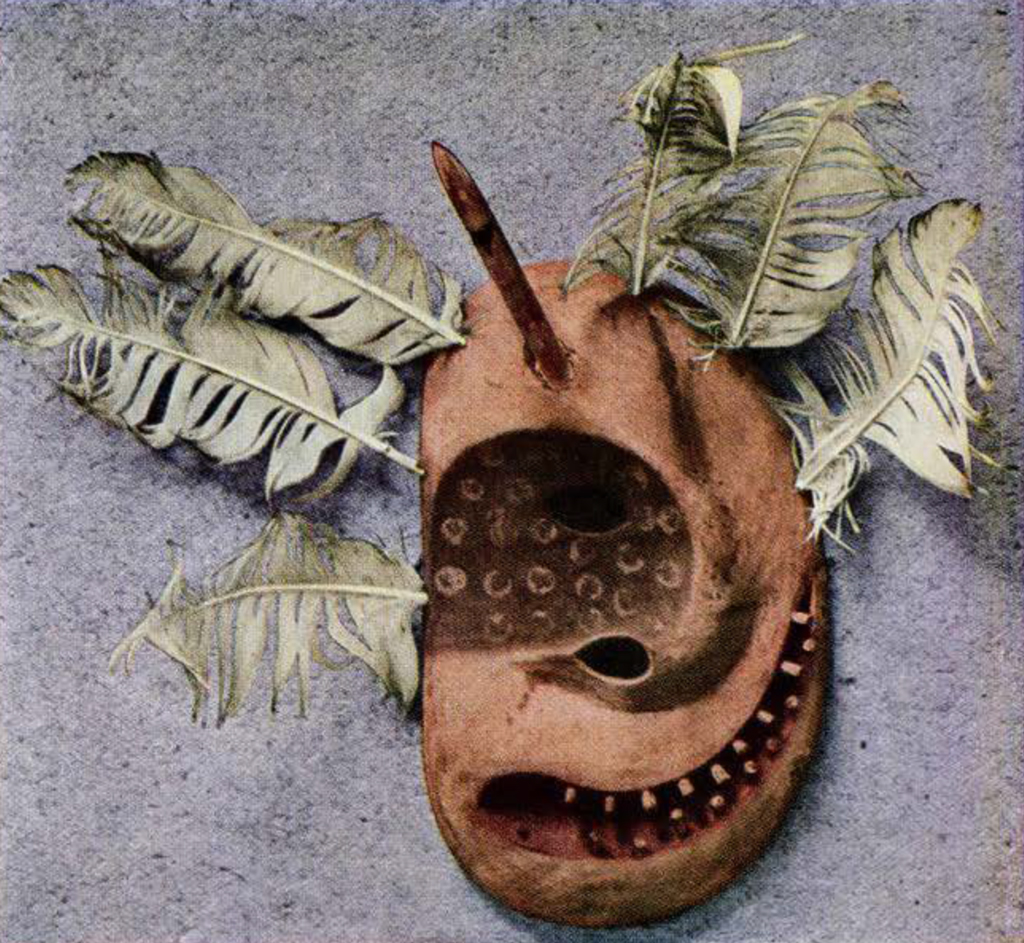THE rare mask which was collected from the Eskimo of Hooper Bay, Western Alaska, by W. B. Van Valin, is a remarkable portrayal of the power, the grotesqueness and the malevolence of the elemental beings which peopled their Arctic World. These are the Tun-ghat, wandering genii, the shades of men and of semi-human animals, and the inhabitants of the moon and skyland. To these the angakoks, or medicine men, gave visible form in carved masks which were used at the Feasts to the Dead and the Inviting-in Ceremony which summoned and welcomed the spirits of the game animals upon whose good will the existence of the Eskimo depends.
Master of all animals is the Man-in-the-Moon, whose iglu, covered with white deerskins is surrounded by his herds in skyland. When animals become scarce it is the duty of the angakok to enter into a trance, for which he has a special technique, and journey to the moon to ask for a renewal of the supply. As danger awaits the visitor to the moon, two angakoks usually make the flight, literally to keep each other in countenance.

Museum Object Number: NA10248
Image Number: 12011
The Eskimo recognize that, with all its changing outline, the moon always presents the same aspect to the earth-dweller. By a natural thought transition, he pictures the Man-in-the-Moon as all front-a mask of a man-hollow behind. It is the custom of the Moon-dweller to welcome his guest with grotesque dances, and, should the visitor laugh, he pays the penalty of having his viscera carved out. If he keeps his countenance, he is given the desired game for restocking the homeland and is dropped through the sky-hole to re-animate his awaiting body.
Nothing is certainly known of the significance of the University Museum’s Hooper Bay mask or of the meaning of a similar mask from the same region, which was collected a half-century ago by E.W. Nelson for the United States National Museum, save that they were used in a traditional festival. The peculiar character of the portrayal suggests that it represents the Moon-dweller: the wide up-curving mouth, with its peg-teeth, is not mere comic distortion, but is really only half a mouth; the nose is shown in profile, laid flat, as it were, on the oval disc of the face and hence but one nostril is visible. Above the nostril, the large, dark concavity, painted with light circles, gives to the single eye-hole a sinister expression. A slender horn or spear rising from the forehead in line with the eye and nostril, may stand for the weapon with which the Man-in-the-Moon executed his terrible punishment upon the man who laughed.
The mask in the United States National Museum, has neither spine nor the feathers which radiate from the upper half of the Hooper Baycarving. That these masks relate to the Man-in-the-Moon is further suggested by the outline of their discs which is not a true oval but D-shaped and, like a moon-masquette which Nelson obtained from the Eskimo of the lower Koskokwin, they show the half-moon phase.
H. N. W.

